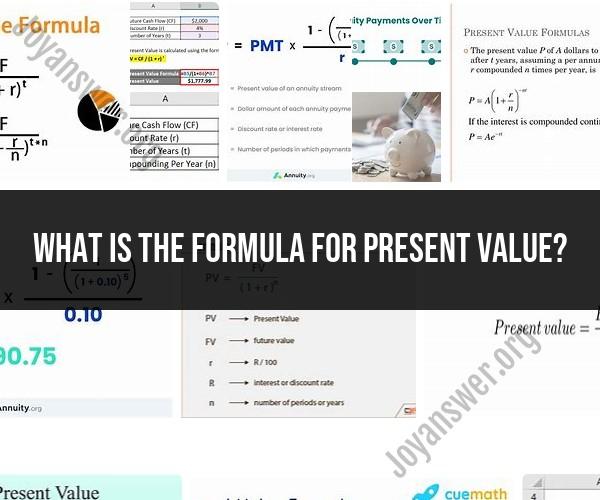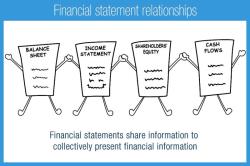What is the formula for present value?
The formula for calculating the present value (PV) of a future cash flow is:
Where:
- = Present Value
- = Future Value (the amount to be received in the future)
- = Discount rate (the rate of return or interest rate)
- = Number of periods until the cash flow is received
In this formula, the present value represents the current worth of a future sum of money, taking into account the time value of money. The time value of money concept acknowledges that the value of money decreases over time due to factors like inflation and the opportunity cost of not investing the money elsewhere.
The formula essentially discounts the future cash flow back to its equivalent value in today's dollars. To do this, you divide the future value (FV) by the present value factor, which is calculated as . This factor accounts for the impact of the discount rate (r) over the number of periods (n).
In summary, the present value formula helps you determine how much a future cash flow is worth in today's terms, allowing for better financial decision-making and investment analysis.
The present value (PV) formula is used to calculate the current value of a future cash flow. It is based on the principle of time value of money, which states that money received today is worth more than the same amount of money received in the future. This is because money can be invested today to earn interest, so money received in the future is not worth as much as money received today.
The present value formula is as follows:
PV = FV / (1 + r)^n
Where:
- PV is the present value
- FV is the future value
- r is the discount rate
- n is the number of periods
The discount rate is the interest rate that can be earned on an investment. The number of periods is the amount of time between the present and the future cash flow.
To calculate the present value, simply divide the future value by the discount rate raised to the power of the number of periods. For example, to calculate the present value of a $1,000 cash flow that will be received in five years at a discount rate of 5%, you would use the following formula:
PV = 1000 / (1 + 0.05)^5 = $783.94
This means that $783.94 invested today would be worth $1,000 in five years at a discount rate of 5%.
The present value formula can be used to calculate the present value of any future cash flow, including annuities, bonds, and stocks. It is a valuable tool for financial planning and investment analysis.
Here are some examples of how the present value formula can be used:
- To calculate the present value of a retirement savings goal
- To calculate the present value of a future inheritance
- To calculate the present value of a stock or bond
- To calculate the present value of a series of future cash flows, such as an annuity
The present value formula is a powerful tool that can be used to make informed financial decisions.













